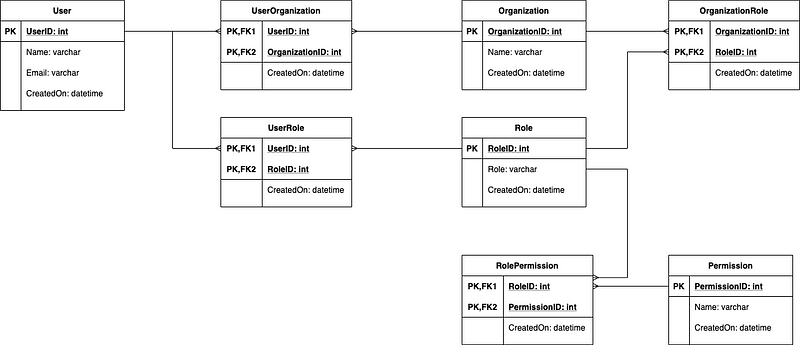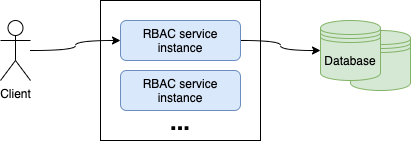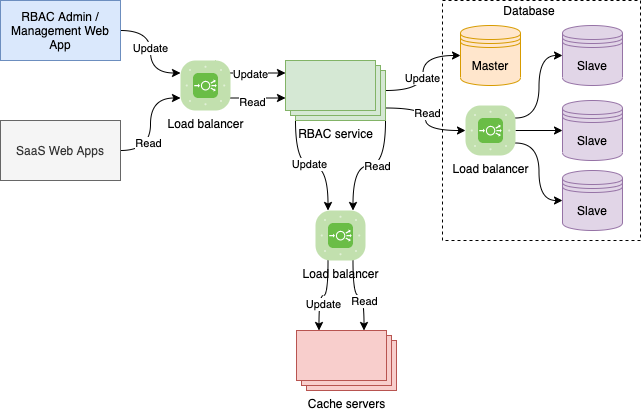Designing a Robust Role-Based Access Control Service for SaaS
Written on
Chapter 1: Introduction to Role-Based Access Control (RBAC)
In this article, we delve into the architecture of a Role-Based Access Control (RBAC) service, which is essential for managing user permissions within your Software as a Service (SaaS) application. This post builds on my previous discussion about scalable SaaS architecture, where I touched on RBAC in passing. Here, we will focus on the intricate details of this crucial component.
RBAC serves as a systematic way to govern user and organizational permissions. The primary domain models we will explore include User, Organization, Role, and Permission, which we will detail further in the Database Schema section.
Section 1.1: Importance of RBAC in SaaS Applications
Implementing RBAC is vital for any SaaS platform as it defines what actions authenticated users can undertake. For instance, it verifies whether a user can delete another user or access specific reporting tools. This system allows for tiered access, where, for example, trial users may only access feature A, while premium users can utilize features A, B, and C. Additionally, RBAC helps delineate user roles, such as read-only or administrative access.
The flexibility of RBAC extends to micro-frontends, enabling the reuse of permissions across different components of your SaaS platform. As your application grows, RBAC can seamlessly integrate new micro-frontends without necessitating a complete overhaul of the permissions system.
Section 1.2: Key Features of RBAC
Flexibility: RBAC can manage a growing user base, modifying permissions for individual users or groups, and aligning organizations with various subscription tiers.
Scalability: The service can be horizontally scaled, allowing additional instances to be deployed as user demand increases.
Separation of Concerns: The RBAC service operates independently, with the web application or micro-frontend interacting with the RBAC API for permissions.
Chapter 2: Functional and Non-Functional Requirements
Functional Requirements:
- Users should have access to features relevant to their roles.
- The system must support grouping users within organizations for easier role management.
- Users must be able to switch between organizations.
- Admins should have the ability to oversee users, roles, and permissions within their organizations.
Non-Functional Requirements:
- The service should be horizontally scalable.
- It must be reusable across various web applications.
- The service must efficiently handle read-heavy requests, as queries for user permissions will outnumber writes, especially in the admin panel.
Video Description: This video covers the implementation of user management in B2B SaaS applications using Frontegg on AWS, providing insights on RBAC design.
Chapter 3: High-Level Design
The RBAC service can be accessed through either RESTful APIs or gRPC calls. Below is a sequence diagram illustrating how the RBAC service interacts with a SaaS web application to manage user authorization.

The main objective of our RBAC service is to furnish role and permission information to the web application. After receiving this data, the web app is responsible for determining user access rights and displaying appropriate features.
Chapter 4: Database Schema Overview
The core tables for our RBAC service will include Users, Organizations, Roles, and Permissions, structured as follows:

- User: Represents authorized users, each belonging to at least one organization.
- Organization: Groups users to facilitate bulk role assignments.
- Role: Bundles permissions that can be assigned to users or organizations.
- Permission: Specifies the actions a role can perform, such as viewing dashboards or removing users.
Chapter 5: API Design
The following core APIs are essential for effective RBAC management:
- Get Users by Organization: Retrieves a list of users associated with a specific organization.
- Get Roles by User: Returns roles assigned to a user, providing an overview of their privileges.
- Get Permissions by User: Lists permissions granted to a user, allowing the web app to determine available features.
Video Description: This video explains the design and development of multi-tenant SaaS applications at scale using Azure Cosmos DB, emphasizing effective RBAC implementations.
Chapter 6: Ensuring Reliability and Redundancy
To ensure robust performance, our RBAC service should operate multiple instances in production. This architecture allows for seamless traffic management, where standby instances can take over if the primary instance fails.

Utilizing a master-slave replication strategy for our database will further enhance reliability. The master instance will handle write operations, while slave replicas will manage read requests, optimizing performance for read-heavy workloads.
Chapter 7: Future Optimizations
As our RBAC service scales, we may consider implementing caching strategies to alleviate server load, utilizing a Least Recently Used (LRU) policy to manage frequently accessed permissions data.

For extensive write operations, we might also contemplate separating read and write services to optimize performance further.
Chapter 8: Conclusion
When launching a new product, start with the essential RBAC framework and expand as needed. For established SaaS platforms anticipating growth, follow the outlined guidelines to enhance redundancy and reliability. Revisit optimization strategies as necessary to keep pace with evolving demands.
For further insights, check out my other articles on Software Architecture:
- Architecting a Scalable Notification Service
- Architecting a Scalable Software as a Service